FBI Boards Dali to Start Court-Authorized Criminal Investigation
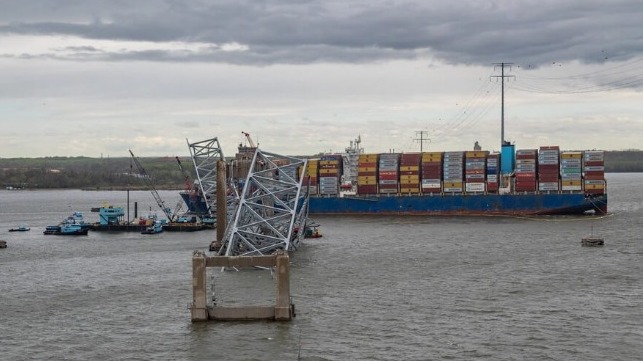
Investigators for the Federal Bureau of Investigation (FBI) boarded the containership Dali early on Monday morning, April 15, to open a criminal investigation into the circumstances leading up to the catastrophic events that caused the collapse of the Francisco Scott Key Bridge and the loss of six workers on the bridge. The move came as Baltimore reported it has hired legal counsel and lawyers representing three of the road workers also said they were pursuing legal efforts. At the same time, the ship’s owners and managers have filed efforts to limit their liability and share salvage costs with the cargo owners.
Several teams of investigators were seen going aboard the vessel as first reported this morning by the Washington Post. They said the vessel was boarded shortly after daylight with three small boats going alongside and at least two teams were seen climbing the ladders onto the ship.
In response to media inquiries, the FBI issued a brief statement saying it was “presently aboard the cargo ship Dali conducting court-authorized law enforcement activity.”
The teams are looking at the vessel’s condition before it left the dock with rumors that the crew knew the vessel had “serious systems problems,” according to the Washington Post report. The U.S. Coast Guard previously confirmed the ship had been undergoing what they termed “routine maintenance” while it was docked in Baltimore.
The National Transportation Safety Board last week said it was pursuing its investigation focusing on the vessel’s electrical power system. NTSB chair Jennifer Homendy told a Senate panel last week they were looking at the electrical systems and in particular mentioned the circuit breakers. This came after a media report said tests by the fuel supplier showed the fuel sourced in New York for the vessel met specs.
The NTSB is continuing with its investigation and the U.S. Coast Guard has also commenced its Marine Board of Investigation looking into the causes of the incident. The Washington Post reported that the FBI’s criminal investigation will take precedence and citing unnamed sources they said the USCG would suspend evidence collection while the FBI was conducting its efforts.
News of the criminal investigation came as the City of Baltimore also announced it was taking legal steps to proactively and aggressively address the situation. Baltimore reported it has retained two external legal firms to work on the case.
The City said it will, “launch legal action to hold the wrongdoers responsible and to mitigate the immediate and long-term harm caused to Baltimore City residents. Through this engagement, the City of Baltimore will take decisive action to hold responsible all entities accountable for the Key Bridge tragedy, including the owner, charterer, manager/operator, and the manufacturer of the M/V Dali, as well as any other potentially liable third parties.”
Maersk, which was the time charter of the Dali, and MSC which shares routes through the 2M Alliance, reported on Friday that they had been notified that the vessel’s owners have declared General Average. The move will let Grace Ocean which owns the Dali and Synergy Marine which manages the vessel share the costs of the salvage with the cargo shippers.
“No indication is communicated so far as when and where their vessel will be berthed and discharged, but this decision indicates that the owners expect the salvage operations to result in high extraordinary costs for which they expect contribution from all salvaged parties under General Average,” MSC wrote in a customer alert.
The salvage operations both to remove the wreckage of the bridge and to release the Dali are continuing. As of April 11, the Unified Command reported that approximately 38 containers have been removed. The removal of these containers they said is a critical step required to safely move the Dali and eventually fully re-open the Fort McHenry Channel. Removing containers will allow for safe access to then remove the pieces of the Key Bridge that lie across the ship’s bow, taking weight off the ship and ultimately enabling the ship’s movement.
East Coast's Biggest Crane Barge Hoists Giant Piece of Baltimore Bridge
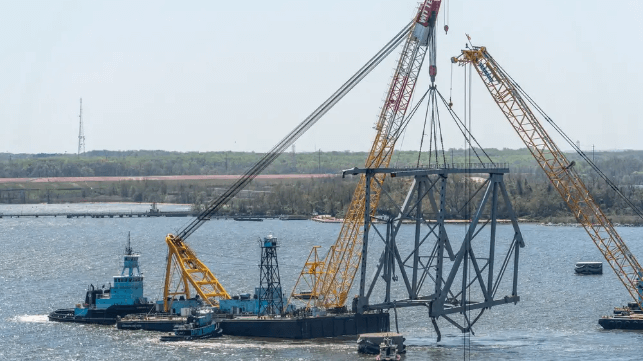
For the first time, contractors for the U.S. Army Corps of Engineers have brought in the East Coast's biggest crane barge to remove a section of the Francis Scott Key Bridge. The large section of the main span was located in the federal navigation channel, and removing it will help advance the work to clear a "limited access channel" for smaller merchant ships.
The barge, the Chesapeake 1000, is operated by Donjon Marine and was originally built for in-yard operations at Sun Shipbuilding in the 1970s. (It has a unique Cold War history.) It was upgraded from 800 short tons to 1000 short tons in capacity in the middle of its career, and it can lift more than any other floating crane on the East Coast. So far, it has been on standby while smaller cranes handled pieces up to several hundred tonnes in size, but Sunday's big lift speeded up the process by removing a large chunk at once.
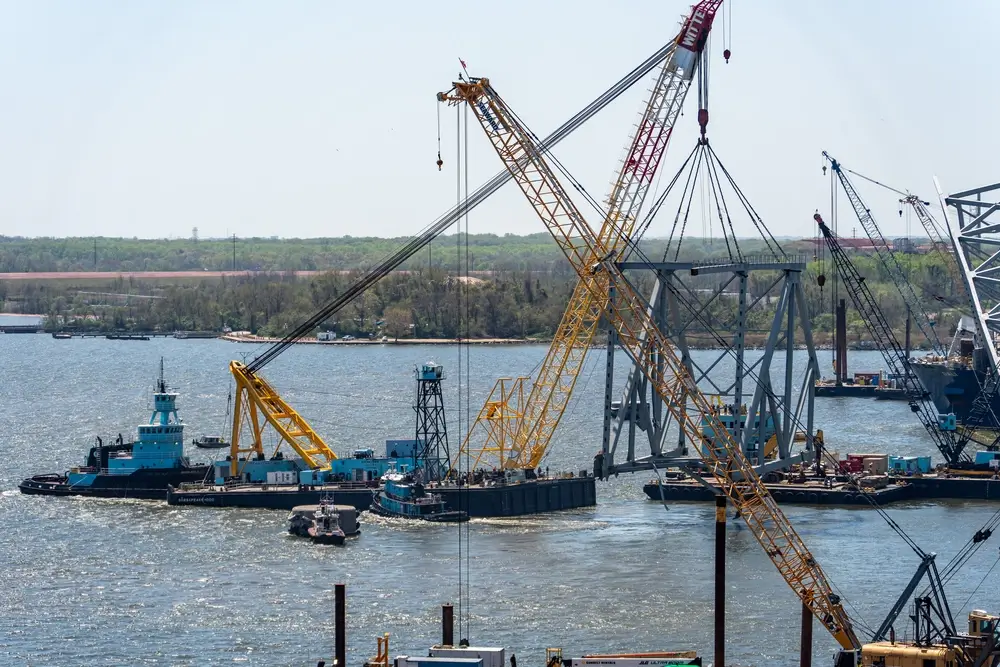
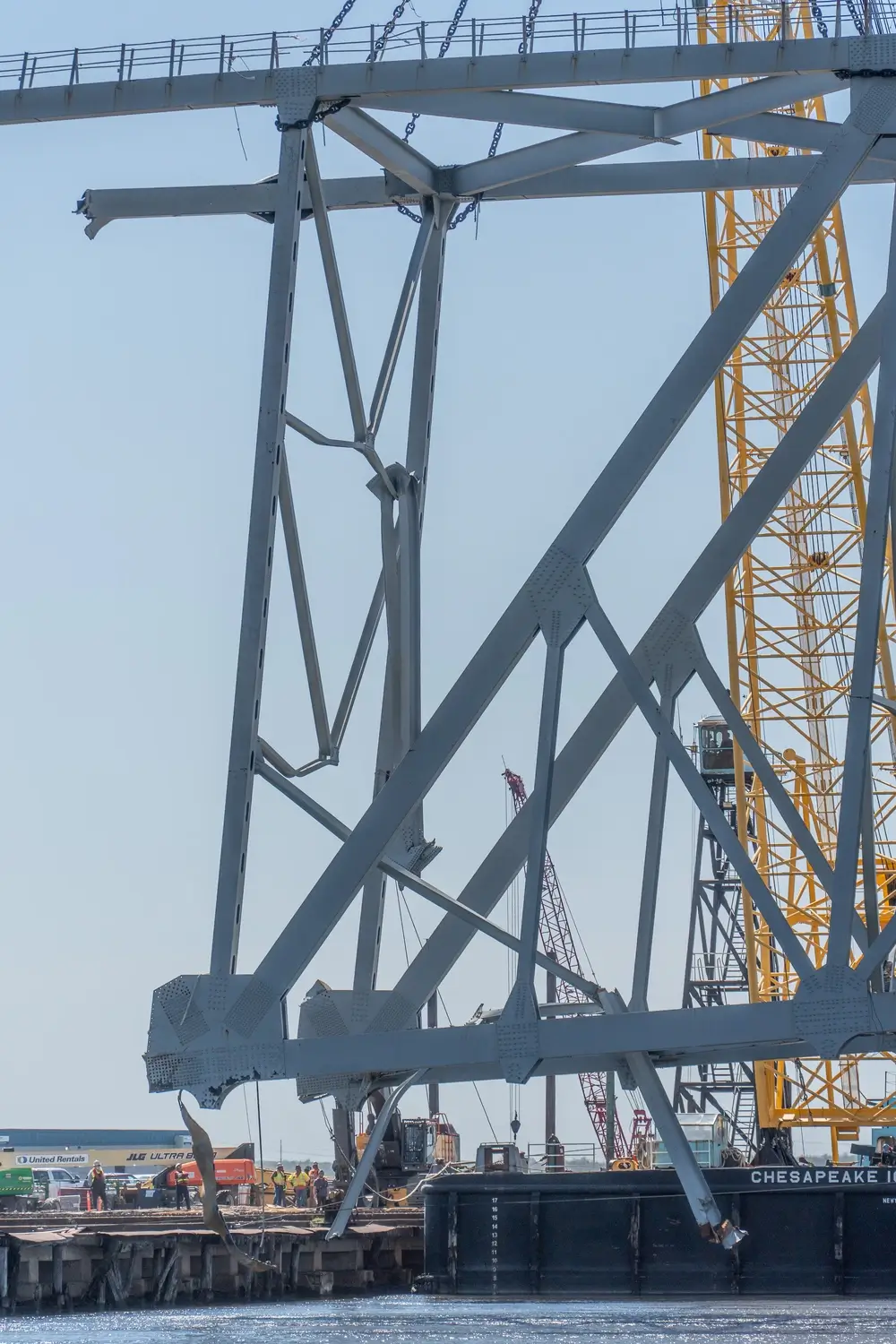
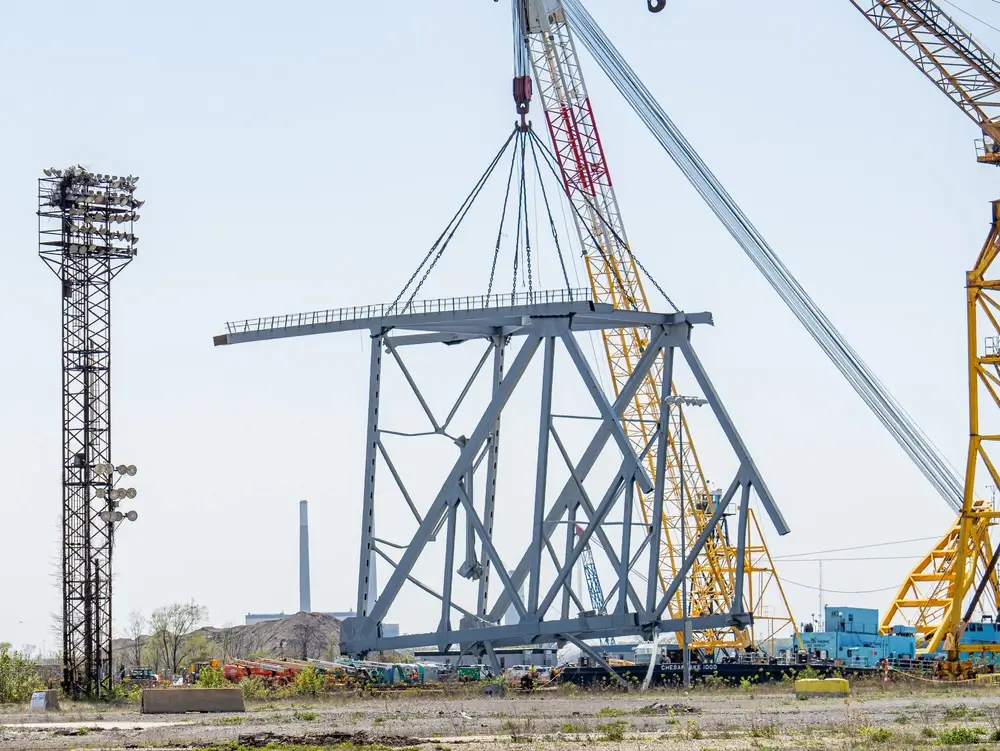
Images courtesy USACE
The wreckage below the water is a tangled mess, and many of the steel members are under extreme tension. The debris is partially embedded in the soft silt on the bottom, making cutting impossible. The unified command plans to use a mechanical grab and mechanical shears to pull out pieces of this wreckage with minimal risk to personnel.
All of the wrecked material is being transported to a five-acre site at Tradepoint Atlantic, a multipurpose terminal located seaward of the bridge. There, a team of workers with torches and heavy equipment are cutting each section into small pieces for recycling. Tradepoint EVP Aaron Tomarchio told the Virginia Pilot that the process is like "eating an elephant."
The task is substantial, but the Army Corps is confident that it can get the limited access channel cleared by the end of the month and the full navigation channel reopened by the end of May. The main limiting factor on speed of completion is the safety of the workforce, and the serious hazards that they have to contend with above and below the waterline.
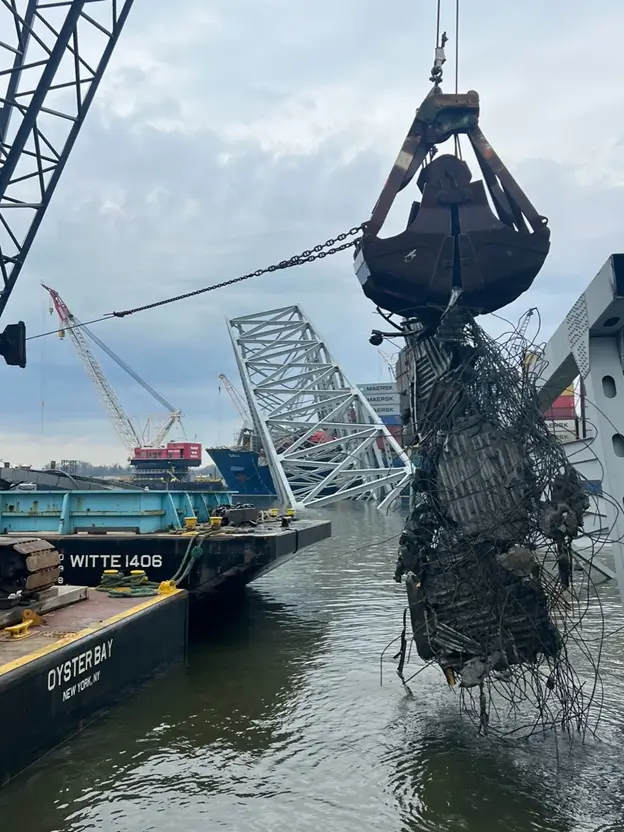
Courtesy USCG
The Army Corps is working with the U.S. Navy Supervisor of Diving and Salvage to oversee dive operations, which are being carried out by an all-contractor dive team. (No military personnel are involved below the water.) Rick Benoit, a diving specialist with USACE's emergency response division, says that the clearance operation below the water is beyond hazardous.
“It may sound dramatic but given the wreckage field created by the collapsed bridge the environment divers are working in and the dangers posed to them is like cleaning the site of 9/11 with blinders on," said Benoit.
It would be difficult to design a more hazardous work environment. The water temperature is cold enough to induce hypothermia after an hour, even in diving gear, so each dive is limited to 45 minutes. Visibility is near zero, about one or two feet, and bright lamps can't be used because the suspended solids just reflect the light back. An unstable tangle of jagged steel, heavy concrete and pointy rebar awaits in the murk, ready to crush, trap or impale the unwary. The rebar doesn't show up on sonar, so divers find it by touch or by sight. Even the bottom is hazardous: divers can sink into the soft silt, where more sharp debris might be waiting.
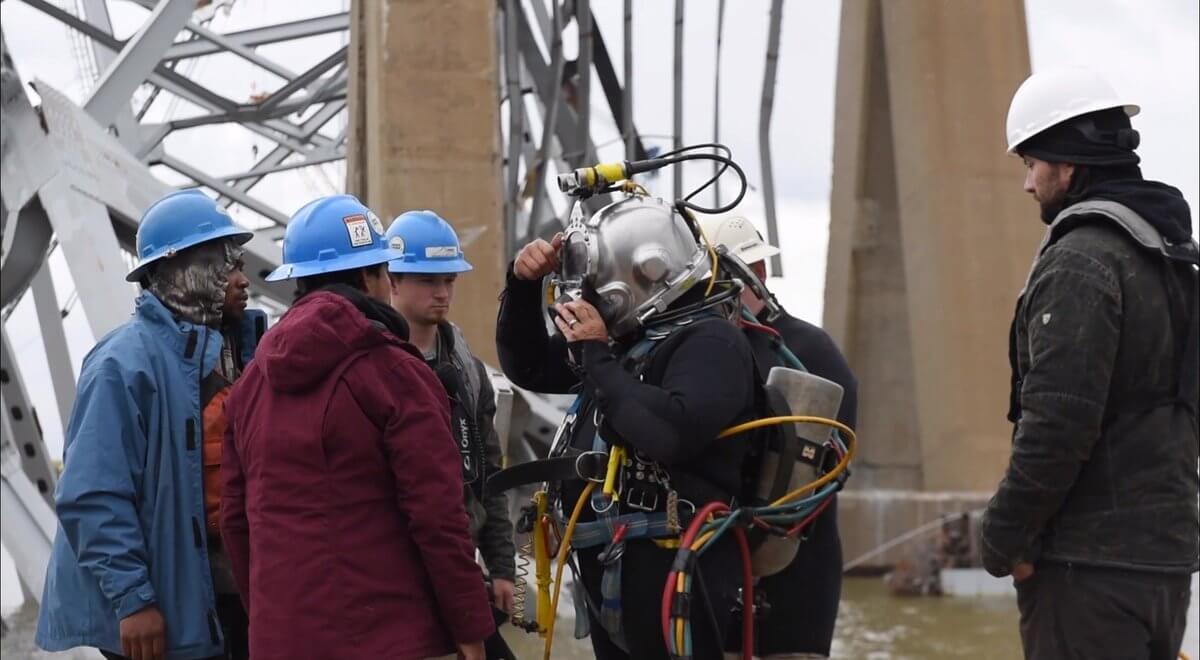 Courtesy USACE
Courtesy USACE
“I guarantee every diver down there has that on their mind, but they can’t be afraid—they can’t stop going into work—because the work has to be done,” Benoit said.
The possibility of finding human remains adds another level of complexity. If remains are found, state police and public safety divers would take charge of the recovery effort.
No comments:
Post a Comment